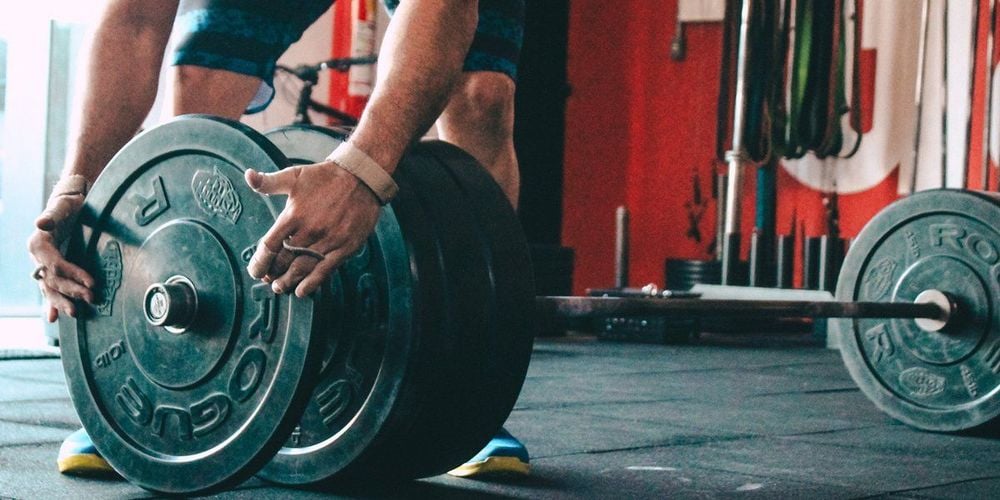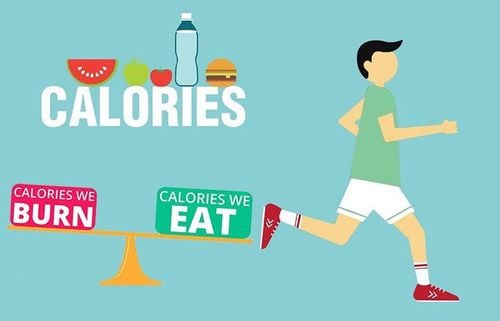1. Weightlifting every day helps your muscles grow bigger and stronger
Any daily weightlifting routine brings benefits to your muscles and health. How you train depends on your workout goals. If you want to lift heavier weights, your strength training program will be different from that of someone who wants to develop bigger muscles.
Prince Brathwaite, a personal trainer certified by the National Academy of Sports Medicine (NASM) and the owner of Trooper Fitness, said: “Before creating a workout plan for anyone, I always determine what their goals are.”
Training programs vary according to three main characteristics: volume, intensity, and rest periods. This is because the muscle fibers you engage and how you perform them vary according to your goals.
You have two main types of muscle fibers: Type I slow-twitch and Type II fast-twitch. Type I fibers require a steady supply of oxygen to activate in endurance exercises, such as running, cycling, and swimming. Type II fibers are used in explosive movements like heavy weightlifting.
Following a higher rep range at lower intensity will help you train your Type I muscle fibers, which increases your muscular endurance. Lower rep ranges at higher intensity will help you train your Type II muscle fibers to increase muscle size.

2. Weightlifting exercises according to workout goals
While lifting weights every day can help you achieve your strength goals, it is important to ensure that you allow your muscles to recover properly. Therefore, it is best to avoid working the same muscle group every day.
If your goal is to build muscular endurance, allow your muscles to recover for at least 24 hours between sessions. If you are aiming to increase muscle size, rest for 24 to 72 hours. Take 48 to 72 hours of rest if you are training for both endurance and strength.
When you strength train, you tear muscle fibers, but this is part of the process of muscle growth. You should not lift weights with the same muscle group every day because muscles need to heal to rebuild.
For example, you can focus on training your lower body, including your glutes, hamstrings, calves, and hip flexors on Mondays, and then chest and back muscles on Tuesdays. This way, one muscle group is recovering while the other group is being trained.
3. What other benefits does weightlifting have besides improving muscles?
3.1. Weightlifting helps you burn fat and can aid in weight loss
Weightlifting every day can support your weight loss goals by helping you burn calories and reduce overall body fat. Although you can't spot-reduce fat in specific areas like the abdomen immediately, strength training promotes overall body fat reduction by building muscle and increasing your metabolic rate.
Muscle burns more calories than fat, even at rest, and continues to burn calories even after a workout is finished. Regular weightlifters experience physiological changes, including a reduced body fat percentage, increased muscle mass, and increased bone density.
The extended calorie burn is due to a process called excess post-exercise oxygen consumption (EPOC), also known as the afterburn effect, which is a measure of the amount of oxygen your body needs to recover. During resistance training, your body requires more oxygen afterward to restore normal metabolic function, and this process burns calories.
A very small study in June 2015 on men published in the Journal of Exercise & Sport Quarterly Research found that both resistance training and interval training created a resting metabolic rate 12 and 21 hours after exercise, compared to steady-state aerobic exercise.
To increase the calorie-burning effect in your daily lifts, add some compound exercises that challenge multiple muscle groups and joints at the same time, and make the rest periods between sets shorter.

3.2. Weightlifting every day can improve your VO2 max
When you strength train, you are increasing muscle activation, which requires a continuous supply of oxygen-rich blood, thereby improving your cardiovascular endurance.
Although weightlifting will not improve your VO2 max in the same way that HIIT training can, incorporating some strength exercises into these routines can help improve your VO2 max.
You can integrate both HIIT and weight training by performing two to four exercises using a muscular endurance program that includes high repetitions and low weights with fewer sets and 30 seconds of rest between exercises.
Following this program will improve your cardiovascular health. An example of this type of workout program includes performing kettlebell swings, push-ups, and pull-ups.
3.3. Weightlifting helps keep your bones strong
After the age of 30, you begin to lose muscle mass at a rate of 3 to 5% per decade, a process known as sarcopenia, according to Harvard Health Publishing. This loss of muscle mass results in decreased mobility and increased risk of falls and fractures. Sarcopenia is primarily the result of hormonal changes due to aging.
However, you can help prevent sarcopenia by lifting weights regularly. Specifically, focus on strength training exercises that stimulate your fast-twitch muscle fibers, because most of the muscle loss you experience affects Type II muscle fibers.
According to a May 2013 study in the journal Experimental Gerontology, muscle mass loss due to aging is largely due to smaller Type II muscle fibers. Essentially, if you don't use them, you lose them.
According to Wolff's law, proposed by German surgeon and anatomist Julius Wolff, your bones will adapt to the pressure they bear, so by gradually increasing the load, your bones will adapt to withstand more pressure.

4. Improper weight lifting can harm your body
Just like any other form of exercise, if you do not allow your muscles time to recover, weightlifting every day can backfire.
4.1. Are you exceeding your body's limits
If you are lifting weights every day and not allowing enough time for a healthy diet and sleep for your body to recover, you might be overtraining and causing injuries, which can lead to unwanted weight loss.
Experts recommend resting one to two days between workouts and varying the muscles you train in each session to allow sufficient recovery time.
Exceeding limits in weightlifting can be due to overtraining or exhaustion. This can be caused by not allowing enough rest time for your body to recover and heal from the damage caused by exercise.
Some ways to prevent exceeding your body's limits are to take your rest days seriously, keep your workout programs simple, and focus on exercises guided by experts or trainers.
On recovery days, remember to truly let your body rest. You can do light stretching, movement, foam rolling, and yoga to soothe sore muscles from weightlifting and promote healing while staying active.
Paying careful attention to your diet is also very important. Make sure you are providing your body with enough protein, carbs, and healthy fats to recover and fuel upcoming workouts.
4.2. You could get injured
Resistance training can become detrimental if you overtrain or fail to address any muscle imbalances. Lifting weights every day targeting the same muscle groups and joints can lead to overuse injuries.
In fact, overuse injuries such as biceps tendinitis do not just occur from repetitive movements. They can result from training too frequently and using inappropriate loads.
Choosing the right load is very important. If you lift heavy weights without proper warm-up and gradual weight increase, you may risk injury. If you are new to weightlifting, it is important to clarify this with your healthcare provider or a physical therapist.
You should work with a certified trainer to ensure you are lifting weights with good intensity and addressing any imbalances that could lead to injury.
Ultimately, whether you should lift weights every day depends on your goals and the muscle groups you are targeting. Training the same muscle groups every day will not allow them to recover fully, so it is best to alternate training different muscle groups on different days.
Hopefully the above information has provided you with more options and explained the benefits of lifting weights every day. May you have a consistently healthy diet and enhanced productivity to improve life.
To arrange an appointment, please call HOTLINE or make your reservation directly HERE. You may also download the MyVinmec app to schedule appointments faster and manage your reservations more conveniently.
Reference source: livestrong.com












